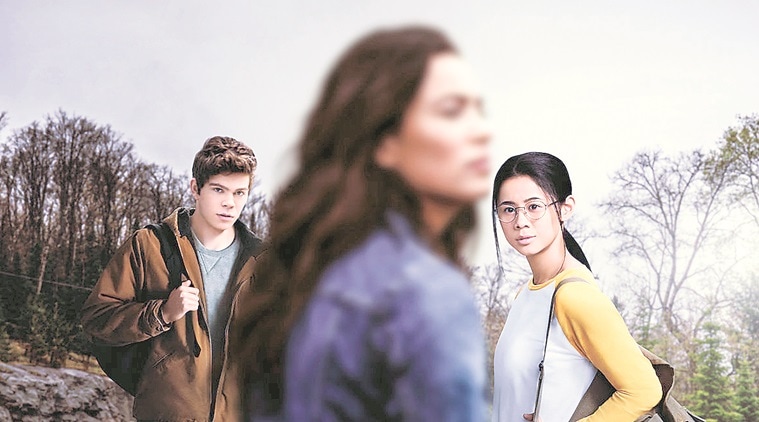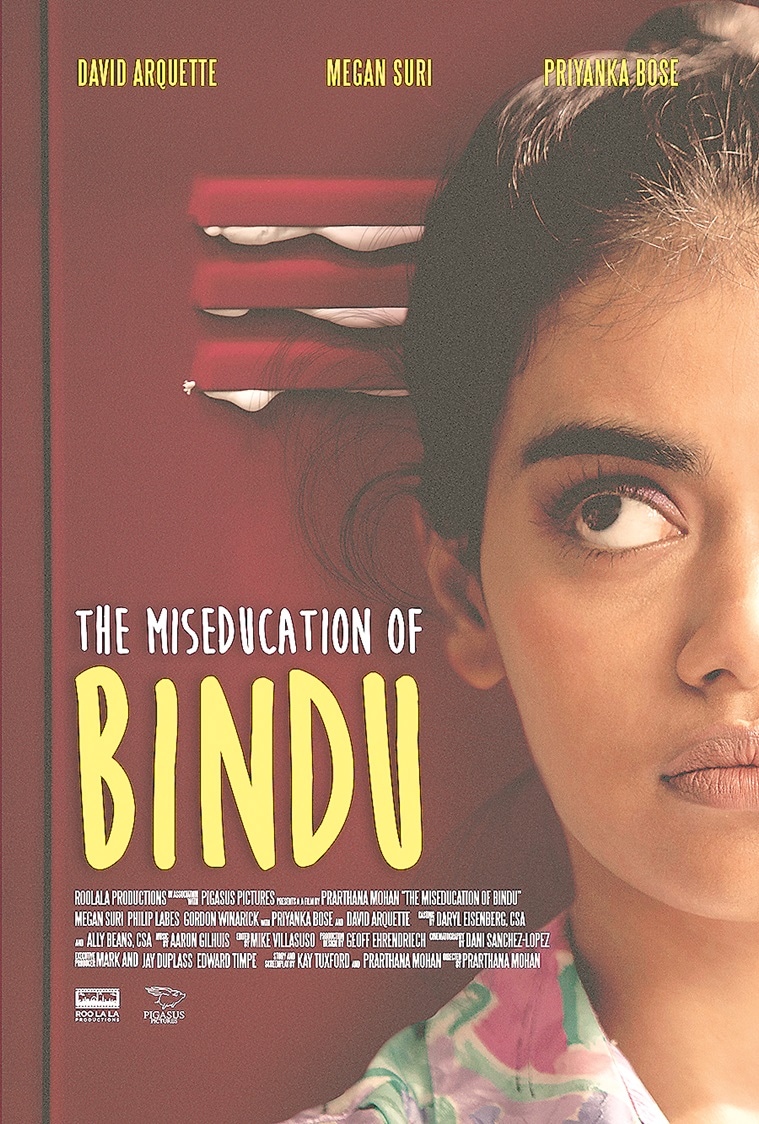 The young ones: Still from The Half of It.
The young ones: Still from The Half of It.
In one of those staple scenes of American high-school hi-jinks on screen, a simpatico teacher tells the lead character Bindu Choudry, who’s been having a really hard day, that high school is “all about finding your tribe, your posse, your band of merry-makers”.
Wait a minute, though. Lead character? A girl named Bindu? In a film set in an American high school?
That’s right. In 2019 The Miseducation Of Bindu, a debut feature by LA-based Prarthana Mohan, produced by Jay and Mark Duplass, the girl at the centre of the narrative is Indian. Bindu (Megan Suri) has been homeschooled up until now and injected into the high-school system by her overly protective mum’s (Priyanka Bose) recently-acquired white American partner (David Arquette) because he thinks she will miss out if she doesn’t get to sample the all-American high-school experience.
Which is all well and good. But when you’re gangly, awkward and don’t quite know what the rules are, and no one looks like you, that same “experience” can be daunting. Especially when you’re having the kind of day that Bindu is, which involves a shocking degree of sexism, meanness and cluelessness. At the end of the awful day, you see those growing-up pangs get some quenching: despite the movie-going clunk occasionally, Bindu does manage an education.
The American high-school movie has long been a sub-genre among the vast-and-varied Hollywood coming-of-age tales, but the presence of an Indian-American girl at the centre of the narrative was a new thing. The small indie film screened at a couple of film festivals in the US last winter, but obviously Bindu Choudry didn’t manage to become a talking point, the way another Indian-American girl doing-the-high-school-thing recently has: a vast number of Netflix-watching denizens know who Devi Vishwakumar, the brash, fast-talking teen, who is working through her dead-daddy and fraught-mommy issues, who has hot takes on everything and doesn’t care who knows it, in Mindy Kaling’s smash web-series Never Have I Ever.
 A poster of the MisEducation of Bindu.
A poster of the MisEducation of Bindu.
Despite the show’s stereotypical characterisations (terribly strict desi mums warding off b-o-y-z, and, gasp, s-e-x), what works in favour of Never Have I Ever is the way teenage angst has been made relatable. And, of course, the central character played with supreme sass by Maitreyi Ramakrishnan, who makes us both want to shake Devi and root for her.
There’s no doubt that the show’s creators were always going for the broad brush-stroke-y sitcom tone, given the genre. Never have we ever seen a brown teenage girl as keen to have her bones jumped, even if she doesn’t quite know what exactly it entails. Nuance? What’s that? Regardless, the soaring popularity of Devi has proved that young people like her can now get their own show, and run with it. Given the most tightly closed gates of American entertainment, where race is such a huge factor when it comes to choice and access, this leading-from-the-front representation can be seen as a step up: remember the long lines of confused ABCDs that would pop up in film and TV to canned laughter, only to stay strictly on the periphery? Finally, the brown girls are in the ring, tra la la la. In the next season, maybe there will be complexity.
Nuance, and a lovely delicacy, can refresh the same theme if it’s another kind of work altogether. There’s nothing generic about Alice Wu’s film The Half Of It, which premiered on Netflix just a week before the Kaling show. In the lead is the quiet, observant, nerdy (yes, she’s that girl who makes money by writing term papers for other students) Chinese-American Ellie Chu. The Half Of It has been labelled a queer coming-of-age film, but to me, the queerness is not a starting point: it is a gradual discovery of self. You don’t look at Ellie Chu as “that queer girl”. You look at her as a young girl who is instantly drawn to Aster, another young girl who seems to have the same affinity to the written word as she does. You also see Ellie’s fortifying friendship with high-school classmate Paul, the inarticulate jock who asks her to help him woo Aster.
Ellie Chu, a fictional teenager on the other side of the world, lives in a movie, but her story makes us feel. The pain and the rapture of young love, of growing up, and finding who you really are. All of it, even if it is in the half of it.